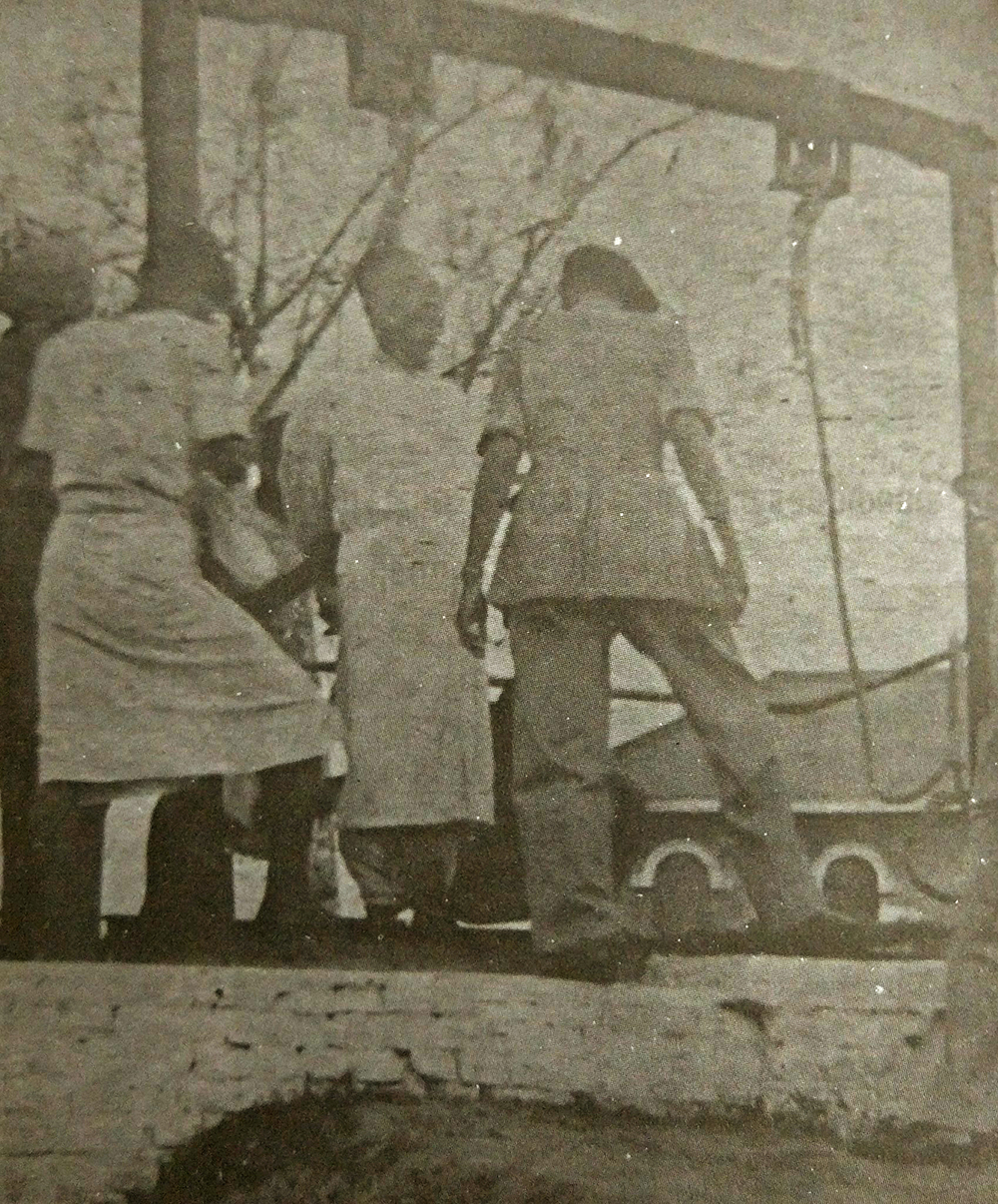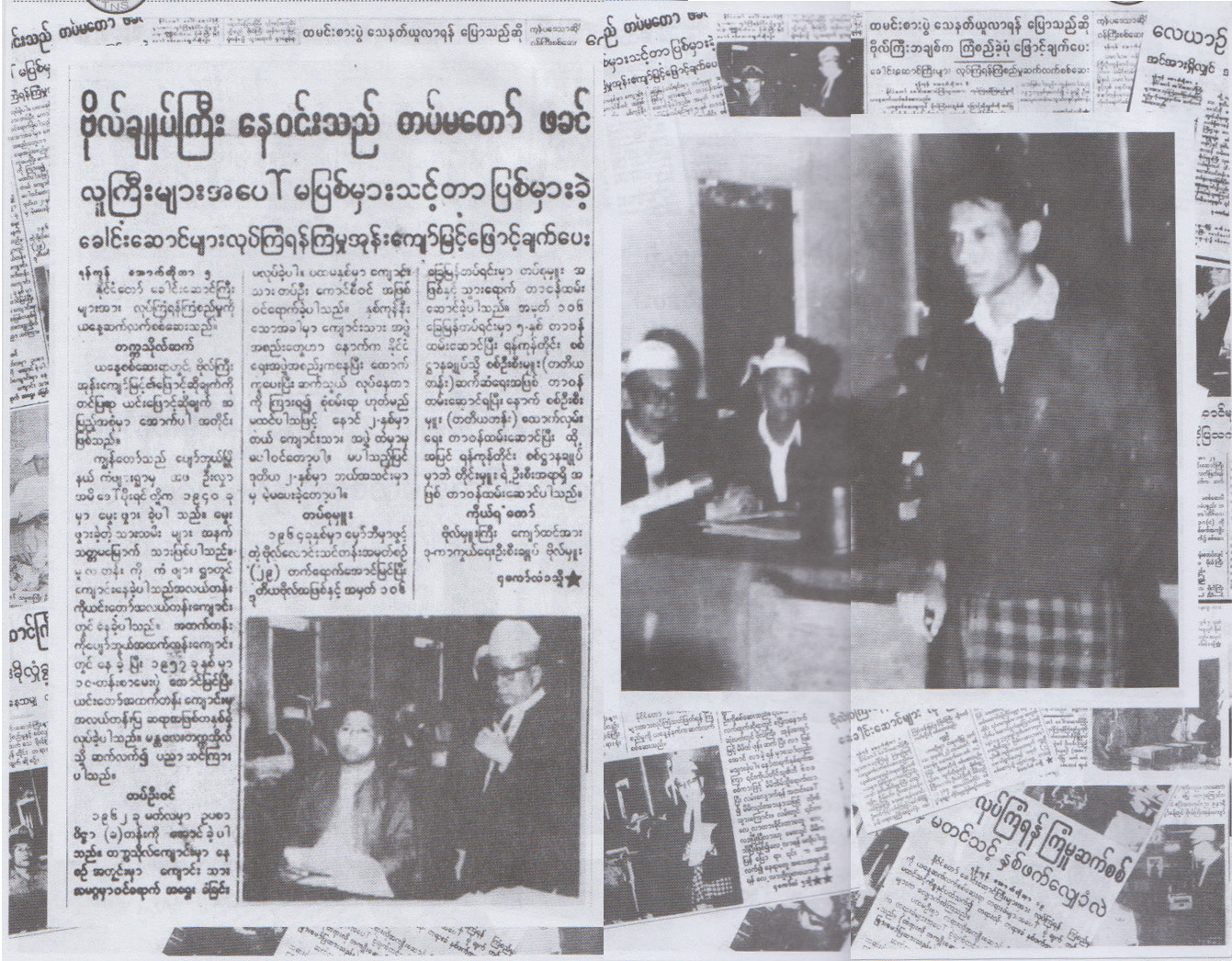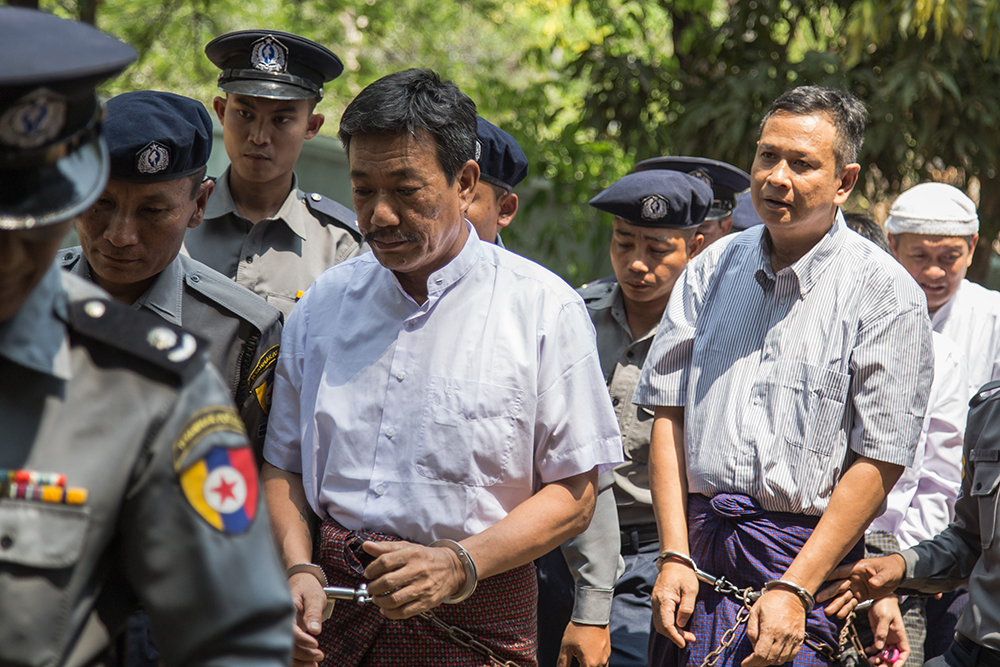YANGON—Two weeks ago, a Yangon court handed down death sentences to two men involved in the killing of National League for Democracy (NLD) legal adviser U Ko Ni, who was gunned down at point blank range outside Yangon International Airport two years ago.
With U Ko Ni’s assassination widely believed to be politically motivated, these were the highest-profile capital cases in Myanmar’s recent history. U Ko Ni was a longtime advocate for amending the country’s Constitution, mainly to diminish the military’s involvement in politics. The Constitution was drafted by the military and is widely criticized as undemocratic. At the time of his death, the 63-year-old lawyer was advising the ruling NLD on charter reform.
On Feb. 15, a judge at Yangon’s Northern District Court pronounced that convicted gunman Kyi Lin should be hanged for his premeditated murder of U Ko Ni. His accomplice Aung Win Zaw received the same sentence for helping to plan the killing. (Two others received prison sentences while another major suspect is still at large.)
Since independence, U Ko Ni’s case is the third political assassination plot—successful or otherwise—that has led to the death sentence and gripped the public.
Seventy years before U Ko Ni’s bloody assassination in Yangon, Myanmar national hero General Aung San and his cabinet members were shot to death during a meeting at the city’s Secretariat. The killings, which took place less than one year before the country achieved independence from the British, were masterminded by U Saw, a former prime minister of British Burma and the general’s bitter political rival.

U Saw and nine men were put on trial for the assassinations, and a special tribunal handed down death sentences to all of them in December 1947 after convicting them of committing or abetting the murders. But only U Saw and five accomplices were executed on a late summer morning in May 1948.
As the gray dawn broke on the day, witnesses said, U Saw emerged from his cell and smiled to everyone he saw on his way to the gallows. The 48-year-old paid his last respects to a Buddha statue on the way. He even shook hands with some of the officers supervising the execution and said goodbye. While U Saw paid with his life, his family’s suffering lasted long after his death for they became virtual outcasts for what he had done.
The case may have appeared to be open-and-shut, but many loose ends were left hanging, leading to conspiracy theories and rumors of other participants in the assassination plot, including British Army officers.
In his book “A Trial in Burma”, which tells the full story of the assassination and trial in the context of the politics and personalities involved, author Dr. Maung Maung, a former assistant attorney-general who briefly served as Myanmar’s president in 1988, writes that Britain itself was on trial in the eyes of the public, as rumors swirled that figures in London supported the plot, believing that with Aung San gone and U Saw in charge, Burma might be kept in the British fold. As a result, to this day many Myanmar people still suspect the British were behind Gen. Aung San’s killing.
Twenty-nine years later, in March 1976, another assassination plot was hatched, this time within Myanmar’s military circles targeting state leaders including the president, General Ne Win; U San Yu, who was general secretary of the then ruling Burma Socialist Program Party (BSPP); and National Intelligence Chief Colonel Tin Oo.
The coup plotters—a group of young army officers led by a captain—were unhappy with Ne Win’s Burmese Way to Socialism, as well as his recent ouster of General Tin Oo as defense minister and chief of staff. The general was quite popular among army personnel at the time. (U Tin Oo went on to become one of the founders of Myanmar’s currently ruling NLD and is currently the patron of the party.) They wanted to restore Gen. Tin Oo to his former position.
The assassination was planned to take place at the Armed Forces Day dinner on March 27 at the Presidential Residence on Yangon’s Ahlone Road. It didn’t happen, however, due to poor coordination among the plotters and the long distance between the site where their weapons were stored and the targeted location. The plotters aborted the plan and agreed to make another attempt later. The plan was leaked, however, and arrests began.
On the evening of July 2, a frightened 36-year-old man appeared at the entrance to the compound of then U.S. Ambassador David L. Osborn on Pyay Road asking for political asylum.

The panic-stricken man was the leader of the failed coup, Captain Ohn Kyaw Myint. He told the ambassador that the plot had been uncovered and that he feared imminent arrest.
Unfortunately, his request fell on deaf ears, as the U.S. government was trying to maintain good relations with Burma at the time. Embassy officials persuaded the fugitive to get into an embassy car and drove into the city while asking him for details about himself and the other plotters. During the ride, they refused his asylum request and managed to get him to leave the car voluntarily somewhere downtown.
The New York Times reported in late August of 1976 that Osborn said he called on the authorities the following morning to report that a man claiming to be an officer had requested asylum. The embassy did not want the Burmese government to suspect U.S. complicity in the reported coup attempt.
The paper said it learned independently that the ambassador had not notified the Foreign Ministry, which would have been in accordance with protocol, but had made his report to Col. Tin Oo, the chief of intelligence. A few days later Capt. Ohn Kyaw Myint was arrested. Along with 13 others, he was put on trial. The trial ended on Jan. 11, 1977 with the captain being sentenced to death, while having also earned the public’s silent admiration. Capt. Ohn Kyaw Myint was executed in 1979 without his family’s knowledge, according to U Win Htein, who was then an Army captain and went on to become an aide to Daw Aung San Suu Kyi until early last year. U Win Htein was himself dismissed from the army in 1977 for withholding information about the plot.
Forty-one years later in 2017, NLD legal adviser U Ko Ni was shot dead. While the victim himself did not hold a position in the state leadership, as in previous cases, his endeavors on behalf of constitutional amendment were unquestioningly remarkable and important for Myanmar. Were it not for his expertise in the Constitution, there would have been no “State Counselor” position created for Daw Aung San Suu Kyi, allowing her to serve as the de facto head of state. The position was necessary as the military-drafted charter bans her from holding the presidency. He advised the NLD on what should be changed in the Constitution in order to make it democratic for the betterment of all Myanmar citizens, bestowing equal rights and self-determination on the country’s diverse ethnic minorities. The motive behind the assassination is an open secret. For his relentless activism and contributions to the NLD on charter reform, he was rewarded with a bullet to the head.
In all three high-profile assassinations, the victims attracted varying levels of public sympathy. The whole nation mourned the loss of its leader Aung San and his cabinet. Daw Aung San Suu Kyi praised U Ko Ni as a “martyr” and a majority of the people remember him as a “hero” who sacrificed his life while helping to shape a better Myanmar society bound by a democratic constitution. At the same time, his killing epitomizes how difficult it will be to change the charter. The failed assassination attempt against Ne Win and his colleagues was a source of public dismay. Their survival led the country to become poorer and the people continued to suffer for decades to come.

Given the diverse motives for these attempted and successful killings, public opinion regarding the assassins is varied as well. U Saw and his men have gone down in history as a national disgrace. This will also be the case for Kyi Lin and Aung Win Zaw, U Ko Ni’s assassins. Despite their death penalties, some questions remain unanswered, such as who masterminded the killing. Only when those behind it are brought to trial will justice be done for the slain Muslim lawyer. Capt. Ohn Kyaw Myint may be a daredevil in the eyes of some due to his unrealistic coup plot. Nobody can deny, however, that he tried to change the regime. He gave his life in the fight against the repressive Ne Win regime. He deserves praise for that.

















